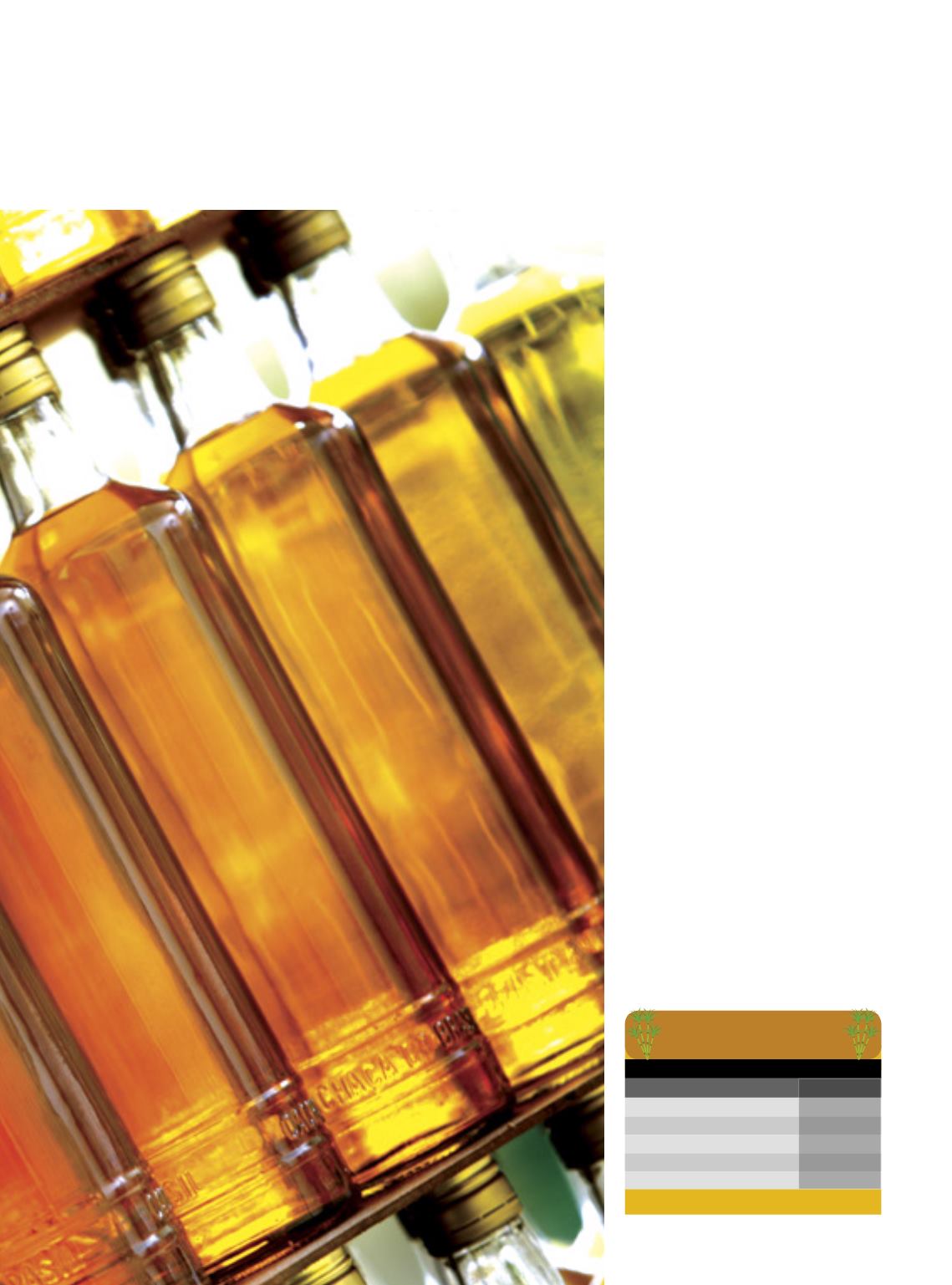
mality levels, especially in the number of
producers, now estimated at more than
85 percent, considering that more than 90
percent of the sector is made up of micro
and small-scale companies.
Ibrac officials have it that the inclusion
of micro companies and small-scale indus-
tries in the Simple National Tax systemwill
contribute toward a reduction in informali-
ty, whilst increasing the number of tax pay-
ers and providing the entire supply chain
with better market conditions. The in-
stalled cachaça producing capacity in Bra-
zil reaches 1.2 billion liters. More than 4,000
brands of the beverage are produced. The
sector generates more than 600,000 direct
and indirect job positions. The main pro-
ducing regions are located in the states
of São Paulo, Pernambuco, Ceará, Minas
Gerais and Paraíba. These states are also
the leading consumers, including Rio de
Janeiro and Bahia, and excluding Paraíba.
The approval of the regulation that al-
lows for the use of the geographical in-
dication (GI) of the sugarcane spirit was
just another plea of the sector that got
its approval in 2016. The GI of the bever-
age rules that the words “cachaça”, “Bra-
zil” and “cachaça from Brazil” can only be
used by producers that reside in the Coun-
try, andwas created in 2001, throughPres-
idential Decree nº 4.062. But no regulation
had been set forth. Inspection of the com-
panies that export the beverage and of the
ones that sell the product in the domestic
market will be carried out by the Ministry
of Agriculture, Livestock and Food Supply
(Mapa), in up to 12 and 24months, respec-
tively, from the moment the text is pub-
lished in the Government Gazette. The ac-
knowledgement of the word cachaça is
intended to hold the product in high es-
teem at home and abroad.
n
dium-scale farmers, has been advocated
for years by the Brazilian Cachaça Insti-
tute (Ibrac) and its associate members.
According to Ibrac officials, ever since the
cachaça sector was excluded from the
Simple National Tax, as of 1st January
2001, several companies have shut down,
due to the high taxes. A Study by the Bra-
zilian Planning and Tax Institute (IBPT)
showed that the taxes levied on cachaça
are almost as high as 81.87% of the sales
prices. The situation led to higher infor-
45
para viagem
To the world
Exportação brasileira de cachaça
* Janeiro a junho de 2017.
Fontes:
Ibrac, Agrostat/Mapa, agosto de 2017.
Ano
US$ FOB Quilos (Kg)
2017*
7.279.908 4.080.611
2016
13.936.210 8.250.550
2015
13.320.684 7.671.279
2014
18.335.792 9.322.540
2013
16.598.768 8.983.662


